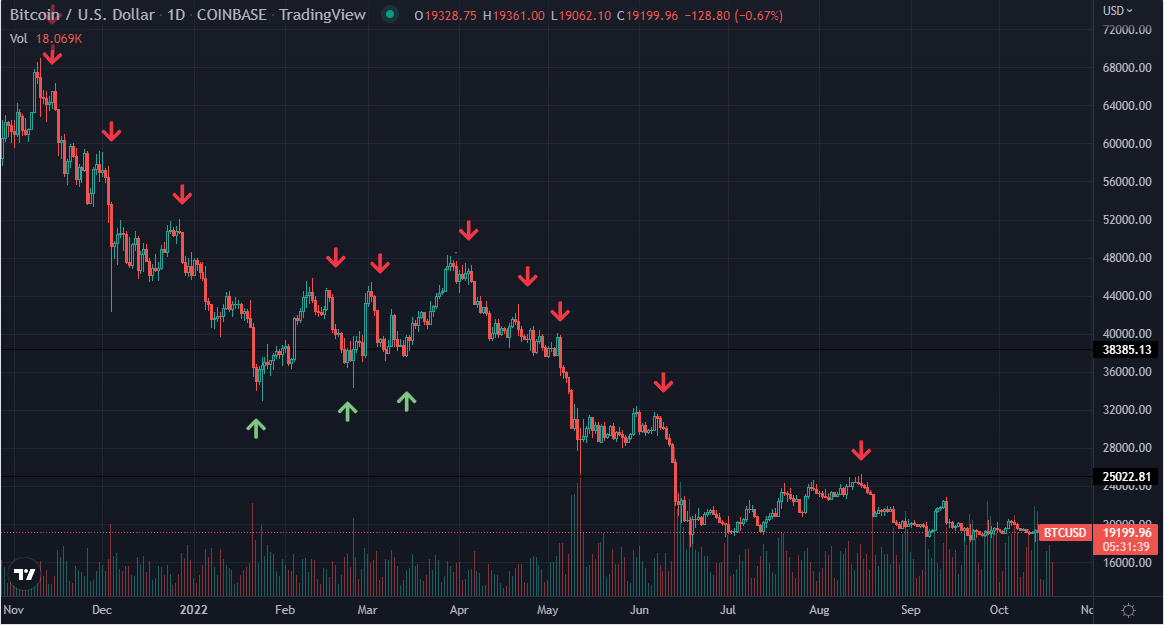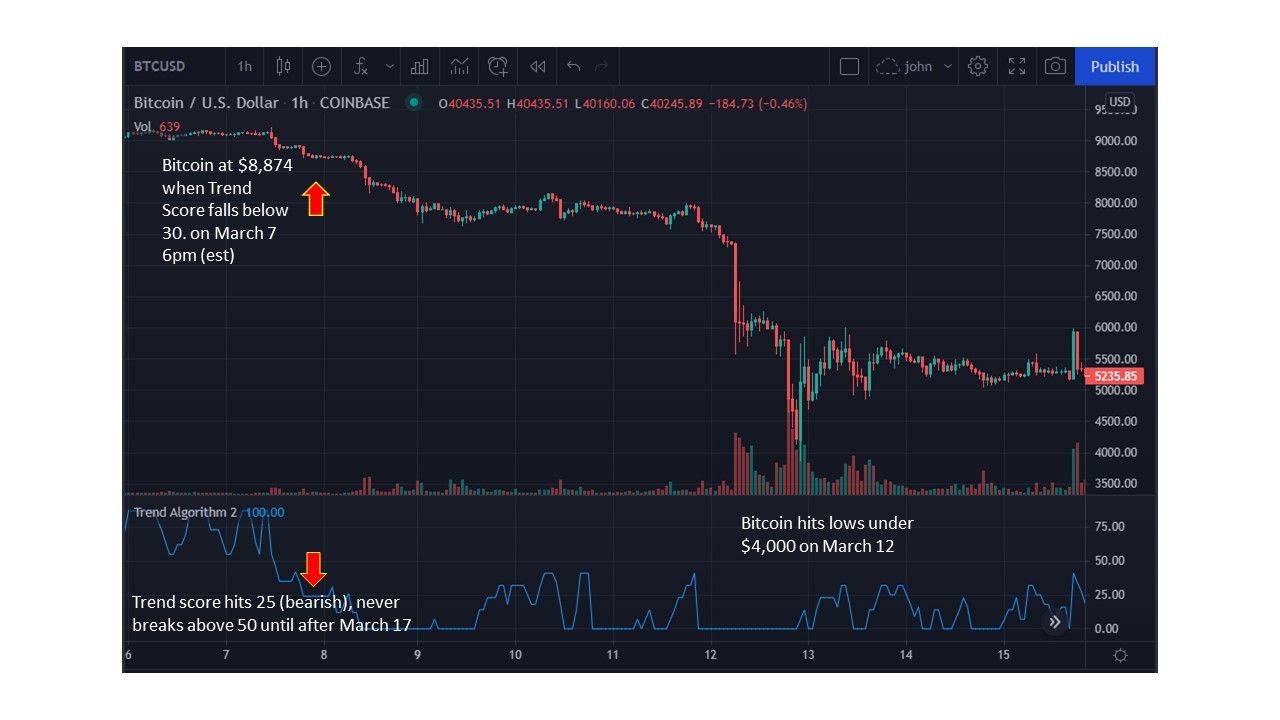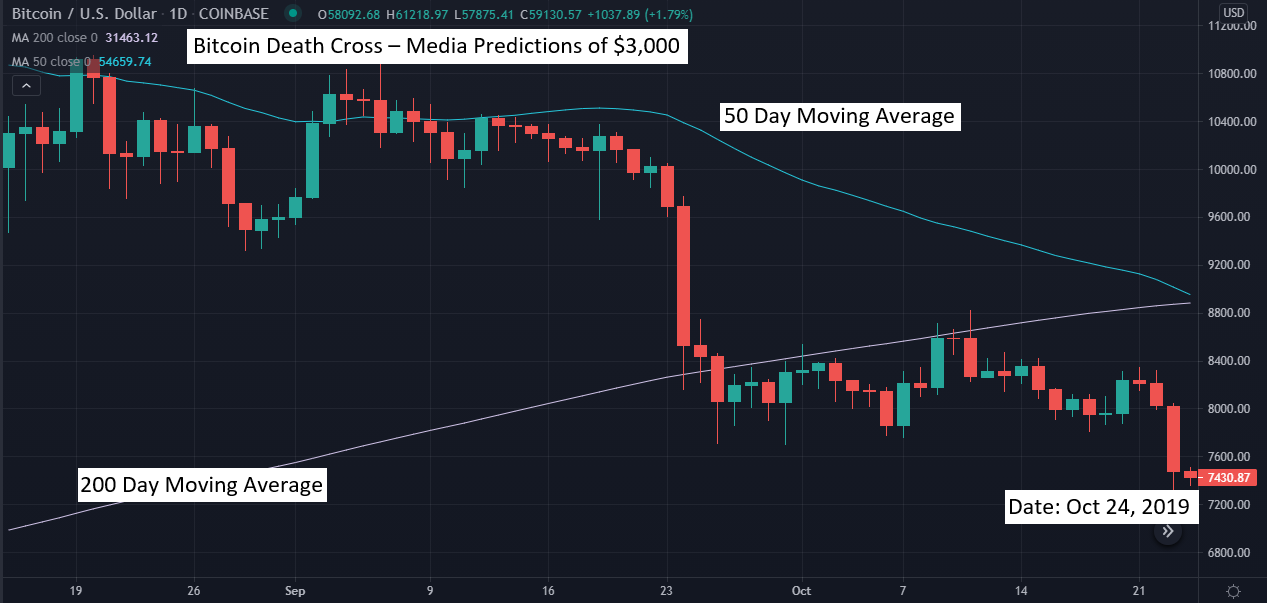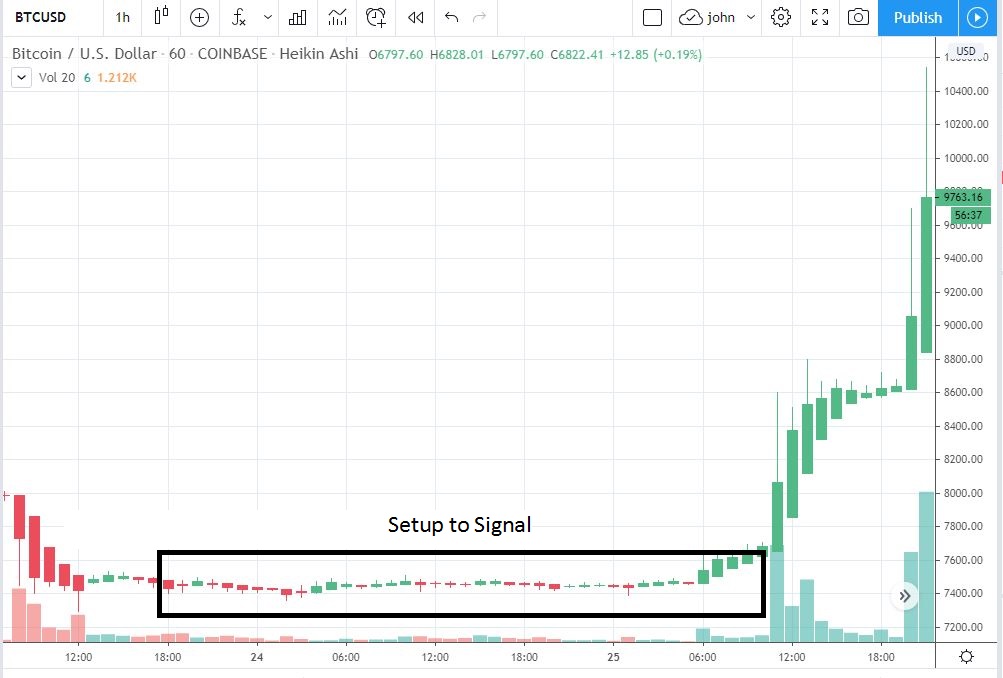What is the Quantify Crypto Trend Algorithm?
John Barry | Wed Dec 07 2022
The Quantify Crypto (QC) Trend algorithm is a momentum indicator designed to predict future cryptocurrency price movements. It identifies bearish (exit) or bullish (entry) conditions of a coin, and scores them from 0-100. The QC Trend aims to ensure that asset positions are on the correct side of significant price movements. Our research and back testing indicates that significant price movements are often preceded by smaller price moves in the same direction, a trend that the QC Trend algorithm is designed to detect.
Trend Algorithm Values
| Signal | Description |
| Bearish (0-30) | Values below 30 indicate downward price movement is likely to occur. This signal is strongest when it first occurs. As the value gets lower, it is confirmation of the downward price movement. |
| Neutral (31-69) | Indicates the price movement has paused from its upward or downward trend. Importantly, a neutral signal does not mean the ending of the previous Bullish or Bearish signal. The neutral condition is not an exit condition. |
| Bullish (70-100) | Values 70 and above indicates upward price movement is likely to continue. This signal is strongest when it first occurs. As the value gets higher it is confirmation of the upward price movement. |
Coinbase Institutional Trading Impact on Crypto Price Trends
Basic Concepts of Trend
Trend Lengths
The EMA Signal Advantage
Quantify Crypto Trend Time Frames
| Name | Candlestick (minutes) | Total time in Hours | Total time in Days |
| Spot | 5 | 41.6 | 1.75 |
| Short | 15 | 125 | 5.2 |
| Medium | 30 | 250 | 10.4 |
| Critical | 60 | 500 | 20.8 |
| Long | 120 | 1,000 | 41.7 |
| Mean | Average of above | 1,000 | 41.7 |
Bitcoin Trends in 2022
In 2022, price trends in the cryptocurrency market continue to be an important indicator of the future direction. The largest price movements in Bitcoin in 2022 were preceded by smaller price moves in the same direction. The arrows in the chart below show these occurrences. The chart is the daily BTC/USD price from Nov 2021 to Oct 2022. Most altcoins have followed a similar pricing trend as Bitcoin.

These price patterns match prior patterns, the linked document reviews 14 significant prices moves from March 2019 to March 2020. Historical Quantify Crypto Trends for Bitcoin
Bitcoin Price Dump Example

Bitcoin Death Cross 2019 - Predictions

Bitcoin Death Cross 2019 - Setup

Bitcoin Death Cross - Result

Conclusions
-
Cryptocurrency trends are critically important.
-
Most stock indicators lag too much to effectively predict cryptocurrency price movements.
-
Need to use indicators proven to work for cryptocurrency markets.
-
Do not trade on margin as the higher volatility of cryptocurrency price movements can cause severe loses that liquidate positions.
-
Professional traders combine market knowledge with technical indicators to gain the best trading strategy.https://quantifycrypto.com/ provides real time technical signals and analysis to support your trading decisions. We have the fastest live price feed of all cryptocurrency informational platform. Our proprietary trend algorithm calculates the predicted direction of future price moves. It is specifically tailored for the cryptocurrency market. Our state-of-the-art displays are designed to provide maximum amount of significant data on a single screen.
None of this is meant to be financial advice and I do not have any financial expertise. Although I worked at the New York Stock Exchange for over 23 years, it was as a developer working on the order flow systems for the NYSE.
Full discloser: I do own Bitcoin and other Altcoins.